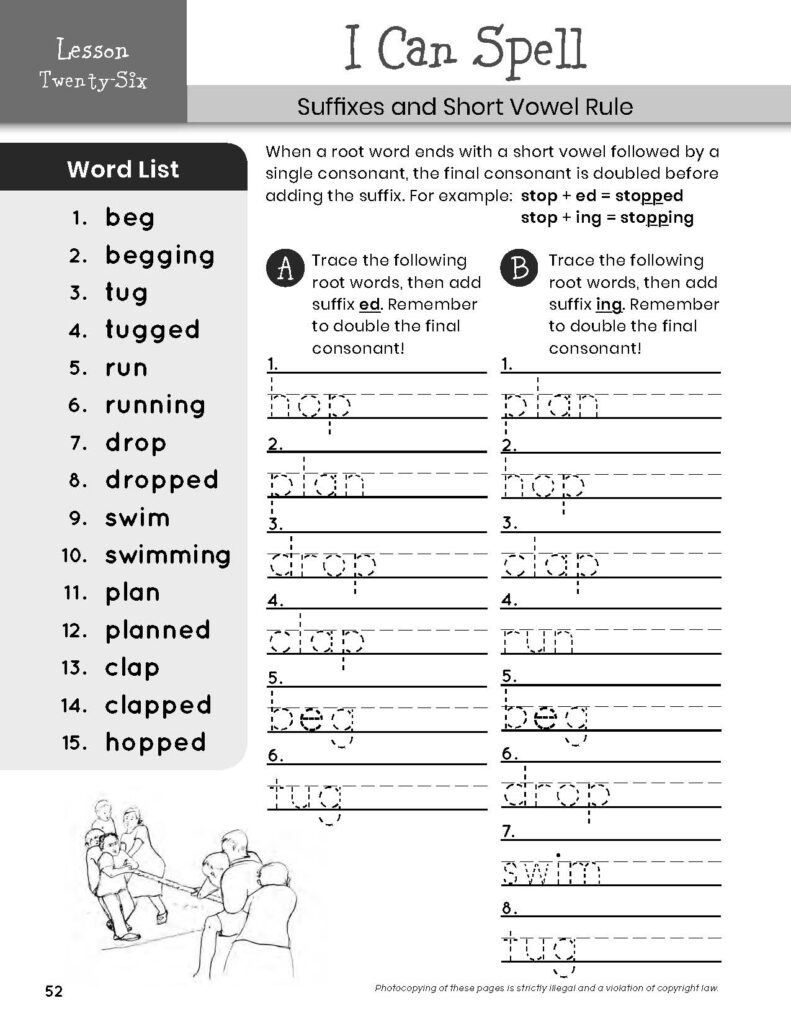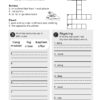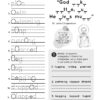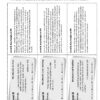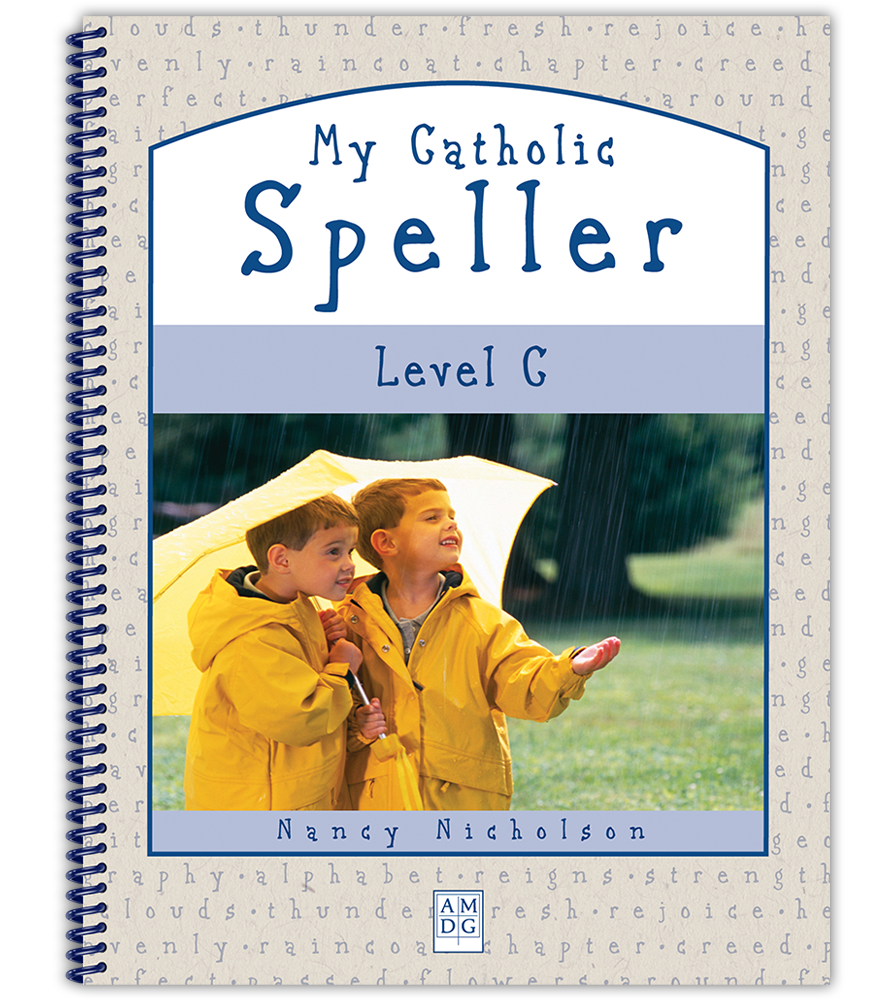The My Catholic Speller series provides a phonics-based approach to spelling in a format that is simple to teach and simple to learn, while fostering a love for Our Lord and His Church in every lesson.
My Catholic Speller, Level B is an easy-to-use, self-contained program utilizing a variety of activities in each lesson to hold the child’s interest. Level B includes:
- 15 new spelling words each week
- Phonics exercises
- Removable answer key
- Lively content that gently connects students’ faith to their everyday life
Save—lessons include vocabulary-building exercises; no need to purchase a separate vocabulary program!
BONUS: This level includes “Scriptural Answers for Every Catholic Kid,” which are apologetics mini-lessons designed around Scripture verses that incorporate spelling list words. Age-appropriate explanations of each verse are included in the book. Children work towards a “S.A.F.E. Catholic Kid” certificate. Recommended for advanced second-grade or average third-grade use. A daily schedule for this program is available in CHC Lesson Plans for Third Grade.
Product Code: MCSB
Format: Softcover
Binding: Spiral binding
Page Count: 98 pages
Dimensions: 8.5″×11″
ISBN: 9780982458570
Returnable? Yes, view return policy.
Consumable? Yes, purchase one per student.
Answer key: A removable answer key is included in the back of the book.
Nancy Nicholson is one of the founding authors of Catholic Heritage Curricula. Equipped with an abundance of God-given talent, a major in Secondary Education–English, and years of experience homeschooling her own children, she has written over thirty educational titles, beginning with Little Stories for Little Folks. Her unique ability to develop programs and workbooks that “fit” both advanced and struggling students is due to her experience raising children of different ability levels and learning styles: two of her children are developmentally challenged, while another went on to graduate from Cornell and is now a college professor.
Q: How do I know which book to choose for appropriate placement level?
A: The best way to determine the appropriate level is to print the sample pages provided within CHC’s Grade-level Interactive Guides. Then you can give the sample lessons to your child to complete in order to see which grade level is most appropriate. You can access the Interactive Guides for different grade levels here.
Q: Do I need a separate phonics workbook?
A: Whenever two subjects can be incorporated into one, it is beneficial to student and teacher alike. Since spelling is based upon phonics, having two separate programs is a little like having a class in numbers in addition to a math class. Some schools teach phonics separately because the whole language or sight-reading program that they also employ doesn’t include phonics. So the phonics materials become an add-on to make up for a deficient reading program. The problem with this approach is that the phonics is being taught separately from reading, which again makes as much sense as teaching numbers as an afterthought to math. If the student has learned to read and spell phonetically since the first grade, he probably won’t need the additional “busywork” of a phonics workbook.
Q: My 4th grade daughter has a lot of trouble with spelling. She was taught in public school to spell words how they sound. She has not moved beyond that now. For example, she spells ‘they’ as ‘thay.’ I know there are phonics rules listed in the My Catholic Spellers but I don’t feel it is enough. There are so many words she misspells all the time. What should I do?
A: How frustrating it must be for both of you, that so little spelling instruction was presented in your daughter’s previous school.
Like most texts, the My Catholic Speller series begins with elementary phonics and progresses forward, with review of basic phonics decreasing as the years advance. Therefore, by fourth grade, your daughter has missed three years of phonics instruction!
Thankfully, one of the blessings of homeschooling is that your daughter is free to move at her own pace and, given the opportunity to learn what she has missed, will likely catch up over time.
On first hearing, it may seem a bit much to begin at the beginning, but that is the best way. It is difficult to build on a non-existent foundation!
There are several possibilities from which to choose for remedial instruction. You might want to pick and choose some, or even all, of the following approaches to teach your daughter over the next year or two.
First, it would be a good idea to drop the fourth grade spelling book completely, as she is not yet ready for it.
Next, a child who feels defeated can sometimes benefit by actually teaching others at a very low level. I note that you have a five-year-old; if you are beginning this child in the Little Stories for Little Folks: Catholic Phonics Readers, perhaps your daughter can become an assistant to him or her, using the phonics-based word family cards. She can then move on to the Name Game to help teach the five-year-old, meanwhile learning the same letter sounds and families herself.
Your daughter might be encouraged to use the word families from the Name Game to create 8×11 posters of word families, perhaps decorating the posters with her own illustrations of some of the words listed there, alongside the word family. [For example, cake, bake, rake, with an illustration of a cake and, in big letters,’-ake’ at the top of the poster.]
You might present this activity to your daughter from the standpoint that these posters are made for the benefit of the youngest child, but of course, the exposure would help your daughter, too.
It would be best if she did each and every Name Game in the entire series, perhaps three-hole punching the 8×11 posters and saving them in a three-ring notebook. [You might post the first few posters on the wall for a week or two, or as long as the five-year-old is working on those phonics sounds. Then those posters could go into the notebook, and be replaced on the wall by the newest posters of phonics word families.]
At the same time, it would be to your daughter’s advantage that she begins instruction with My Very First Catholic Speller, followed by Spellers A, B, and C. Yes, that sounds very basic, but that is what your daughter is missing: the basics.
A good exercise [using My Catholic Speller A, Lesson Two as an example] would be to have your daughter first note that the focus of this lesson is short vowels i and u. Instruct her to make a column for each sound, and then write all the list words with that sound in the proper column. Perhaps she could have a special set of gel or sparkle pens to use just for spelling, using a different color pen for each different word group. [Black or dark blue paper with light colored pens might add a little spice to the exercise.] When she has completed her columns of words, she may wish to draw a box, circle, or square around the words that belong to the same families. [Or, for example, a cake-shaped box around the words that belong to the ‘-ake’ family.]
Another exercise that many students find funny is to write all their spelling words, using the most words in the fewest number of sentences possible.
The key is to have your daughter gain the maximum exposure to the words, by repeated writing and grouping by phonics sounds.
Your daughter will likely find renewed success by starting at a lower level, and may thereby regain a little of her confidence. At first, she may progress fairly quickly, perhaps completing two or three lessons per week. However, it would be best, at the first sign that she isn’t retaining what she has learned, that she slows down to one lesson per week. [For example, if she misses more than two or three words on her spelling test.]
For maximum exposure, you may wish to begin a new lesson by having her read the spelling words to you. Then test her on the list, explaining to her that the test is simply to see which words she needs to practice the most. Then have her write the words in columns, as suggested previously. On Tuesday, she might do the exercises in the book. Test again Wednesday, this time having her write missed words three times. If she is still missing words, discuss the phonics rule or word family on which the lesson focuses. On Thursday, you may want to test again, or perhaps she could practice the words on her own by writing inside boxes or circles that she has drawn with her pretty paper and pens. Then test again Friday. So that she continues to progress, it might be helpful for her to carry over missed words to her next spelling lesson, adding them on at the bottom of the list for practice.
Another easy and non-threatening means of practice, if your daughter likes to use the computer, would be a spelling software program.
Related Products
If you like the featured item on this page, you might be interested in the related materials below.
More Products for This Grade Level
If you like the featured item on this page, you might be interested in other items for the same grade level.








